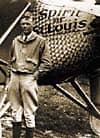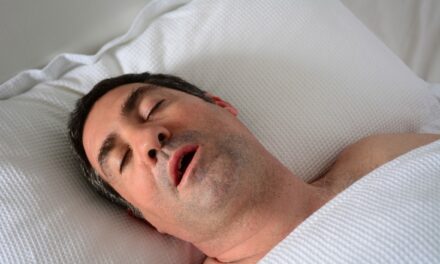Obstructive sleep apnea (OSA)/sleep-disordered breathing (SDB) affects everyone, directly or indirectly. We all know how devastating OSA/SDB can directly impact an individual, but it affects all of us indirectly through higher health care premiums or watching our loved ones suffer the consequences. We are also learning more about how OSA/SDB affects children.
I recently presented “Sleep Apnea from an Anatomical, Anthropological and Developmental Perspective” at the Academy of Dental Sleep Medicine (ADSM) conference in Philadelphia in June. The presentation was a visual version of a two-part article I authored that was published in the March/April and May/June 2003 issues of Sleep Review.
The beginning key point of the presentation was based on an article by Clete Kushida, MD, PhD,1 which discussed the morphometric features that most likely can put an individual at risk for OSA. These features include “a high palate, narrow dental arches, retruded chin, large neck size, and a large body mass.” If a close evaluation of an individual with problems associated with OSA/SDB is taken, these features can be noticed a high percentage of the time.
The 1973 National Health Survey reported 89% of youth, ages 12 to 17 years, had some degree of occlusal disharmony and 16% of youth had a severe handicapping malocclusion that required mandatory treatment.2 These are staggering numbers, especially since my research on prehistoric skulls, as well as skulls that were researched by others, demonstrates that these skulls rarely had malocclusions (or decay). Could the 89% represent the snorers of today and the 16% represent those with OSA/SDB?
In the presentation, I discussed and demonstrated some of the other anatomical features not covered by the formula, including large tongues, elongated palates, large uvulas, ankyloglossia, large tori, and abnormal tongue behavior.
I then presented illustrations of the prehistoric skulls that I have evaluated. The skulls demonstrate that the above features that put modern man at risk for OSA/SDB are not that common in skulls of prehistoric humans. What is quite common in prehistoric skulls, however, are wide palates and large posterior nasal apertures (PNA). Based on my skull research, I hypothesize that prehistoric humans may not have had OSA. I then discussed the importance of this and how performing rapid palatal expansion (RPE) in youngsters can possibly enlarge a small posterior nasal aperture by widening the pterygoid plates (the bony “butterfly-shaped” plates on either side of PNA). I then discussed the significance of this using the Venturi and Bernoulli scientific principles.
Based on 30 years of study, along with observation and clinical documentation, I believe that breast-feeding and swallowing differences during breast-feeding and bottle-feeding can impact the occlusion of an individual. Class I occlusions (in a nonobese, small neck-sized individual) reduce the risk, while retrognathic malocclusions and abnormal tongue behavior (which I have generically been calling “tongue thrusting” for years) might put an individual at risk for OSA/SDB. The term tongue thrusting has caused some misunderstanding, so the term “tongue posture” is now starting to be used since there are many postures that the tongue can assume, including resting posture, which can also affect the form of the dental arches.
Jaghagen et al3,4 stated that snoring patients demonstrated deviant pharyngeal swallowing function that was seven times more frequent than in nonsnoring volunteers. Some of the abnormal swallowing can be attributed to genetic factors such as ankyloglossia, macroglossia, and central nervous system syndromes that are associated with functional muscle challenges, but most of the abnormal swallowing patterns that I have observed in my practice are due to learned behavior.
My research and recommendations on prevention may not help adults today who have OSA/SDB, but it may provide a way to prevent OSA/SDB in those adults’ children and grandchildren.
I believe that prevention is the best treatment for OSA/SDB and breast-feeding is the best form of prevention; however, if this is not an option, then orofacial myology may be the best future treatment modality for OSA/SDB. Orofacial myology (myofunctional therapy) is a technique used by individuals who are specially trained in procedures that can actually retrain an individual to correct the several types of tongue posturing that affect the form of the dental arches and can even reduce and correct some of the malocclusions that may have already been caused. If a malocclusion is the result of an abnormal tongue behavior, I recommend that the individual have orofacial myology therapy before orthodontic treatment. This aids in the success and retention of orthodontic treatment.
My main goal is to educate pediatricians and pedodontists as to how they can and should be the initial evaluators or screeners for airway issues in children. It is far better to prevent snoring and sleep apnea in children than to wait until they are suffering from the severe consequences of the condition as adults.
I encourage readers to look at the presentation on my Web site and discuss the information with peers and colleagues. The content mainly includes research done by others, such as the works of G.V. Black, the father of modern dentistry, who did skull research in the early 1900s. It is also an excellent way to educate and motivate mothers about the importance of breast-feeding.
An expanded version of the presentation is available at www.brianpalmerdds.com. It is downloadable and free of charge to anyone provided it is used for educational purposes.
Brian G. Palmer, DDS, is a full-time general dentist in Kansas City, Mo, who has a special interest in the cause, prevention, and treatment of obstructive sleep apnea.
References
1. Kushida CA, Bradley E, Guilleminault C. A predictive morphometric model for the obstructive sleep apnea syndrome. Ann Intern Med. 1997;127:581-587.
2. American Academy of Pediatric Dentistry Committee Reports. Malocclusion. Special Edition: Reference Manual. Pediatr Dent. 1995-1996;17:3.
3. Jaghagen LE, Franklin KA, Isberg A. Snoring, sleep apnoea, and swallowing dysfunction: a videoradiographic study. Dentomaxillofac Radiol. 2003;32:311-316.
4. Jaghagen EL, Berggren D, Isberg A. Swallowing dysfunction related to snoring: a videoradiographic study. Acta Otolaryngol. 2000;120:438-443.



